The best lenses for Сanon 70D that are reliable and budget.
The article below describes the best lenses for Canon 70D including high-end primes, zooms, telephotos and macro. It’s very important to take seriously the choice of optics for your camera since the image quality directly depends on it.
Read on and you will know which lens is suitable for your camera and which is not. I will describe my top choices for each category and compare the pros and cons. In this article, you will learn more about the best lenses for Canon 70D.
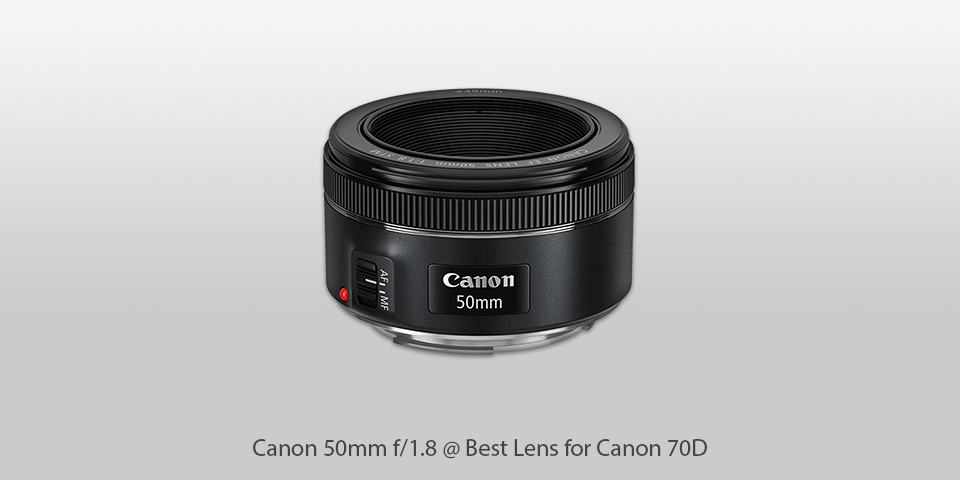
Mount: Canon EF | Diaphragm blades: 7, Rounded | Autofocus: Yes | Min focus distance: 35 cm | Max magnification: 0.21x | Filter size: 49 mm (Front) | Dimensions (øxL): 69.2 x 39.2 mm | Weight: 160 g
⊕ Impressive sharpness
⊕ Excellent image quality
⊕ Great bokeh
⊕ Simple and silent focusing
⊖ Purple fringing
The Canon 50mm f/1.8 is a universal glass lens suitable for beginners, amateurs and professionals. In general, it offers decent performance and pleases shooters with good image quality. Canon has proven once again that it keeps ahead of the curve.
It has all the features to be compatible with camera bodies like 6D, 7D Mk II or even some Rebels. If you are looking for the best lens for Canon 70D to start your photography career, this model is highly recommended by professionals.
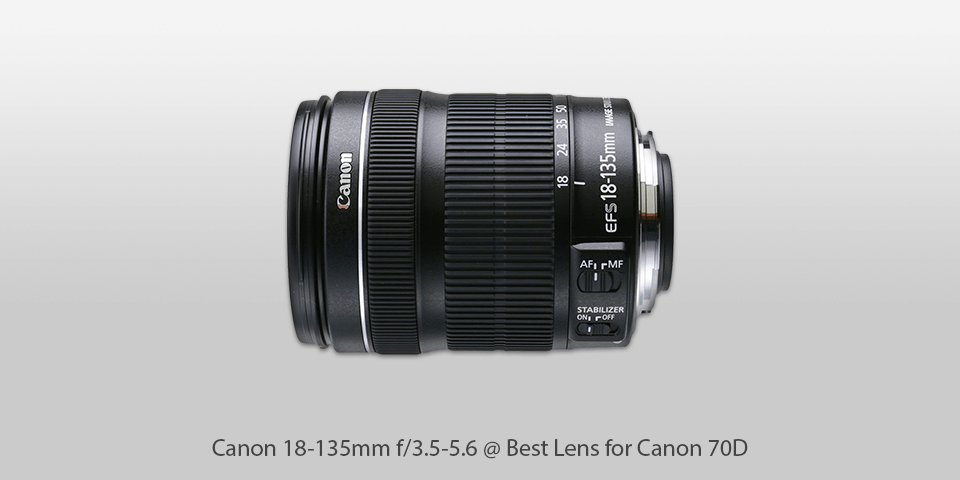
Mount: Canon EF-S | Diaphragm blades: 7, Rounded | Autofocus: Yes | Min focus distance: 39 cm | Max magnification: 0.28x | Filter size: 67 mm (Front) | Dimensions (øxL): 76.6 x 96 mm | Weight: 480 g
⊕ Full-time manual focus
⊕ Internal focusing
⊕ Zoom lock
⊕ 7 zoom ratio
⊖ No hood
⊖ High CA levels
This is a kit lens for Canon DSLRs, so there is no reason to doubt its compatibility with the Canon 70D. It shows decent performance and excellent sharpness, especially at the short focal length. Among its benefits, I will name an image stabilization feature and the overall effective functioning.
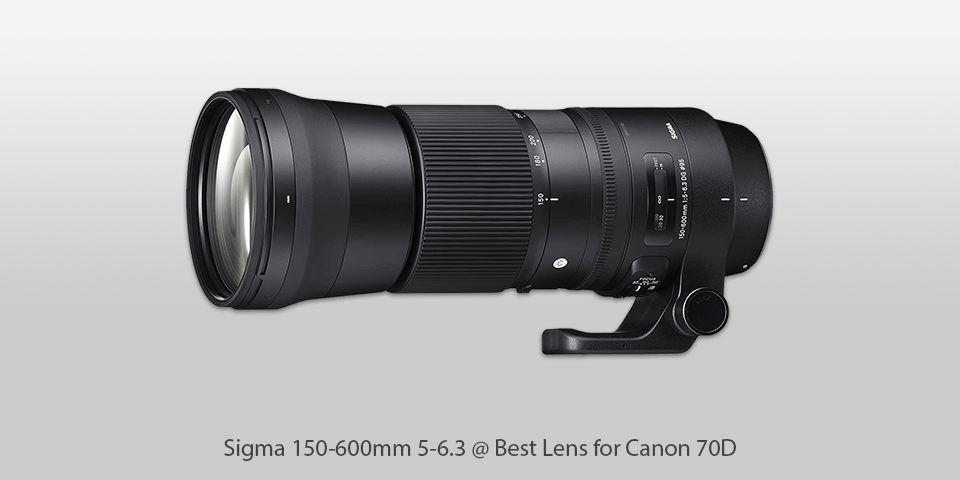
Mount: Canon EF | Diaphragm blades: 9, Rounded | Autofocus: Yes | Min focus distance: 2.8 m | Max magnification: 0.2x | Filter size: 95 mm (Front) | Dimensions (øxL): 105 x 260.1 mm | Weight: 1830 g
⊕ Impressive sharpness
⊕ Fast focusing
⊕ Effective stabilization
⊕ Focuses close for a 600mm lens
⊖ Zoom creeps when pointed up/down
⊖ Heavy
If you are looking for the best lens for Canon 70D that combines budget price and great performance, the Sigma 150-600mm 5-6.3 is exactly like this. In comparison to similar models available on the market, this lens is definitely worth the money you pay.
Its performance is not much different from a premium ‘Sports’ model, but the price is much lower. Thanks to all these benefits, more and more photographers choose this option.
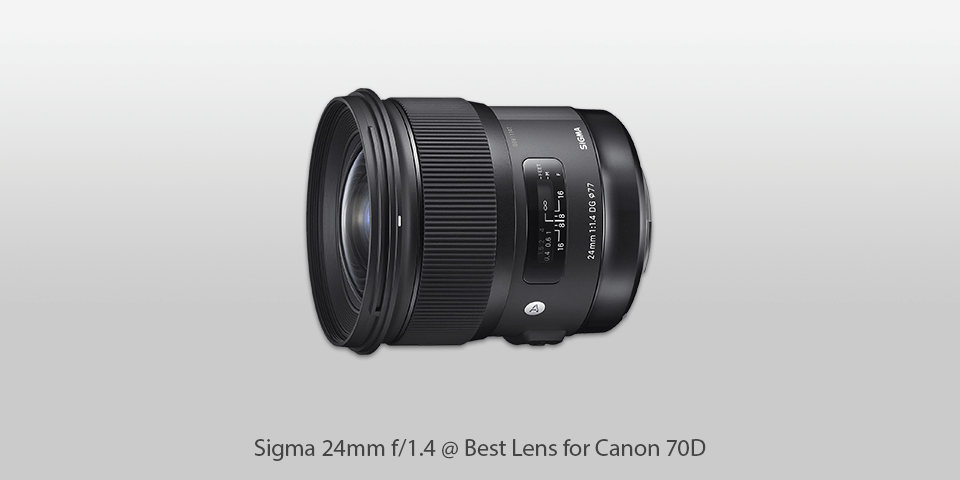
Mount: Canon EF | Diaphragm blades: 9, Rounded | Autofocus: Yes | Min focus distance: 25 cm | Max magnification: 0.19x | Filter size: 77 mm (Front) | Dimensions (øxL): 85 x 90.2 mm | Weight: 665 g
⊕ Impressive sharpness
⊕ Great bokeh for a 24mm lens
⊕ Decent build quality
⊕ Fast focus
⊖ Too much color fringing
Thanks to the great image quality, a pretty decent size and fast focusing, the Sigma 24mm f1.4 DG HSM belongs to the top lenses for Canon 70D. Of course, it is not as good as 50mm and 35mm optics but, in general, it is a worthy option to consider.
If you are looking for a 24mm focal length, this model might be suitable for you. To sum up, it is a solid lens with high-precision autofocusing. I can be calibrated with the Sigma dock.
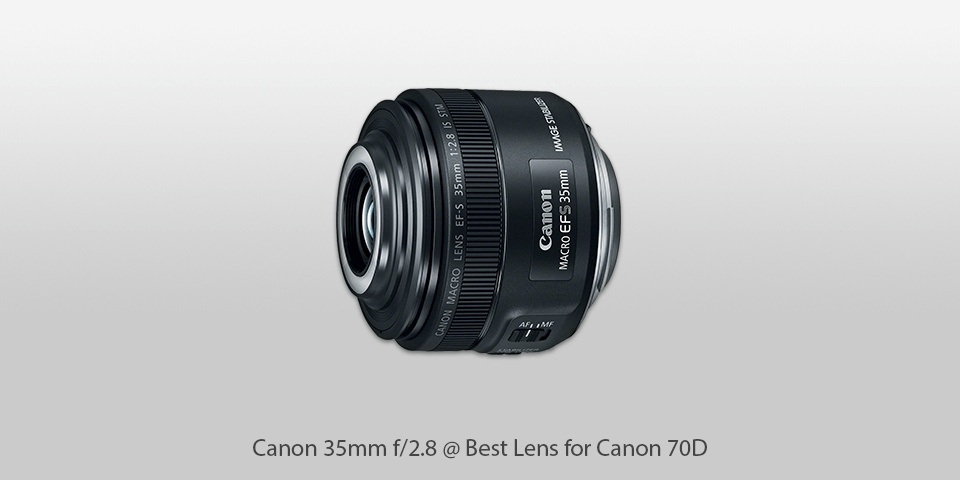
Mount: Canon EF-S | Diaphragm blades: 7, Rounded | Autofocus: Yes | Min focus distance: 13 cm | Max magnification: 1x | Filter size: 49 mm (Front) | Dimensions (øxL): 69.2 x 55.8 mm | Weight: 190 g
⊕ 1:1 magnification
⊕ Decent sharpness
⊕ Integrated LED light
⊕ Smooth, silent focus
⊖ Barrel distortion
⊖ Dimmed corners at wide apertures
If you are a lucky owner of an APS-C Canon SLR, this lens is a great option for you. The Canon 35mm f/2.8 Macro IS STM belongs to budget lenses for Canon 70D with a standard angle of view and wide f/2.8 aperture. Thanks to the image stabilization system, this allows you to capture photos in low light.
Moreover, if you hesitate what to choose, an entry-zoom lens or this one, the latter will definitely give you better pics. Integrated lights improved its macro focusing capability by filling in the shadows that appear when you work close to subjects.
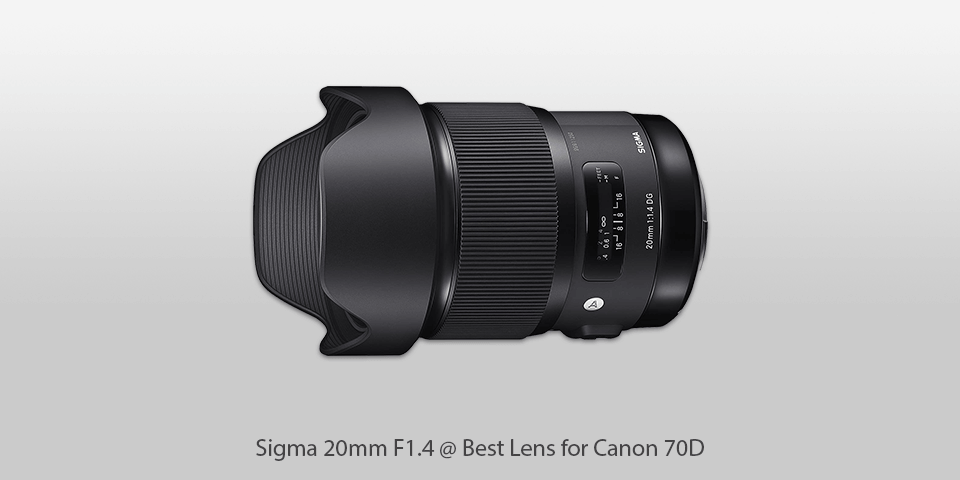
Mount: Canon EF | Diaphragm blades: 9, Rounded | Autofocus: Yes | Min focus distance: 27.69 cm | Max magnification: 0.14x | Filter size: None | Dimensions (øxL): 90.7 x 129.8 mm | Weight: 950 g
⊕ Impressive sharpness
⊕ Low distortion
⊕ Short min focus distance
⊕ Compatible with multiple systems
⊖ Dim corners and edges
⊖ Doesn’t support filters
It is very difficult to find a wide-angle lens with an f/1.4 aperture. However, Sigma has distinguished itself and released this model. It is a Canon 70D wide angle lens that captures a lot of light, focuses close, photographs with excellent detail and minimizes barrel distortion.
Its size and weight just prove that it is impossible to achieve such performance with a small body. Of course, dim corners and edges are a problem but it can be easily solved with the help of image-editing programs.
| Image | Name | Features | |
|---|---|---|---|
 |
Canon 50mm f/1.8
Our choice |
CHECK PRICE → | |
 |
Canon 18-135mm f/3.5-5.6
Budget |
CHECK PRICE → | |
 |
Sigma 150-600mm 5-6.3
Premium |
CHECK PRICE → |

The focal length determines the angle of view that a camera can capture and the spatial relationship of objects in the frame. It is stated in millimeters. This parameter also affects the depth of field, or the distance over which focus appears acceptably sharp.
The aperture is an adjustable diaphragm in a lens. When you adjust the aperture size, you control the amount of light that enters through the lens and strikes the image sensor controlling the exposure. This parameter also affects the depth of field. A wide-open aperture produces a short depth of field; you will see a sharp subject in the foreground and blurred distant objects. A narrow aperture produces a long depth of field and makes close and distant objects seem sharp.
There are two types of lenses for Canon 70D, with an EF-S design and with an old EF design. If you don’t want to use a kit lens and are planning to buy a new one, mind that it could be either EF or EF-S.

If you are looking for the best lens for Canon 70D to photograph at night or capture concerts, pay attention to internal reflections. The thing is that photos sometimes have darker parts and include a bright light source. When you take night shots and concert pics, internal reflections might result in ghosting and reduced contrast.
All the lenses described in this review are compatible with the Canon 70D.
The Canon 70D is the best option for beginner wildlife or sports photographers who want to buy a DSLR camera.
The EOS 70D is not a full-frame camera. It has a crop sensor with a 1.6x crop factor, like all other Canon Prosumer DSLRs with two-digit numbers. Although such devices as the 7D and the 7D Mark II also use crop sensors, they boast more professional features. By the way, Canon has recently released the EOS 80D. You can buy the best lens for Canon 80D and get a really cool shooting kit.
To make the most out of your Canon 70D, watch this video:

 Rating
Rating